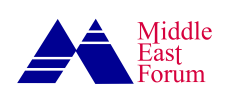Iranian authorities recognize the Iranian Air Forces no longer can rely on antiquated aircraft, such as F-4D/E Phantoms, F-5E Tiger IIs, and F-14s that highlight its need for modernization, and appear ready to purchase cutting-edge Chinese combat aircraft, including the Chengdu J-10CE “Vigorous Dragon.”
Iran’s recent war with Israel made its push for modernization urgent.
Iran’s recent war with Israel made its push for modernization urgent. Iran sees the J-10CE, an enhanced fourth-generation fighter with some fifth-generation capabilities, Active Electronically Scanned Array radar, and long-range PL-15 missiles, as a substitute for Russian Su-35s after Russia delayed delivery. The Iranian Air Force chief, Brigadier General Hamid Vahedi, met with Chinese counterparts and examined the J-10CE during Airshow China 2024. The J-10CE is comparable, if not superior, to upgraded F-16s. Its performance, dependability, and combat preparedness are further confirmed by its operational successes in Egypt and Pakistan.
In addition to filling a void in Iran’s air capabilities, Iranian acquisition of the J-10CE would signal a shift toward Chinese military equipment and the strengthening of economic and security ties with Beijing.
The 2020 expiry of the United Nations arms embargo opened new possibilities for Iranian military purchases, though sanctions and payment barriers impeded new purchases. Now, however, Iran might follow Pakistan’s lead and acquire J-10Cs at a cost of $3-5 billion if it can negotiate oil-related barter-based payment mechanisms. This is a big “if.” Payment-related disagreements have halted negotiations to purchase perhaps three dozen J-10CEs. Tehran has offered to barter oil but Beijing seeks cash payments. At the same time, Iran has looked to Russia’s Su-35 fighters to modernize its air force. However, Moscow’s own wartime priorities and geopolitical limitations hinder supply.
Iran also has expressed interest in the JF-17 Block III, a joint China-Pakistan fighter that combines aspects of fifth-generation technology but is less expensive than the J-10CE. Iran is also apparently negotiating local assembly deals with Russia for the Su-30 and Su-35, which might lead to the ultimate delivery of more than 100 sophisticated fighters into service. Whether Iran has the facilities to take in new fighter aircraft on a large scale is unclear. But according to some defense analysts, integration might happen in a few years, using India’s quick switch from MiG-29s to Su-30MKIs as an example. If correct, this would put Iran in a position to operationalize J-10CEs rather fast, improving its short-term combat readiness.
China is less subject to Western influence and does not face the same degree of sanctions as Russian suppliers have, especially after the Ukraine war.
Iranian authorities seek closer ties with China due to their perception that China is less subject to Western influence and does not face the same degree of sanctions as Russian suppliers have, especially after the Ukraine war. Additionally, the J-10CE better meets Iran’s operational needs. It is a contemporary, multi-role fighter that could integrate well with future purchases of larger Russian aircraft should Iran seek to lower dependency on a single provider.
If Tehran and Beijing work out payment processes, the Islamic Republic of Iran Air Force soon may leapfrog from reliance on antiquated systems purchased before the Islamic Revolution to new-generation aircraft that can better match the air forces of its neighbors and narrow the qualitative military edge that Israel’s air force currently enjoys. Although Tehran previously appeared to lean toward Russia, Russian delays may have tipped the scale toward China and could lead Iran to finalize a military relationship that could last decades.







